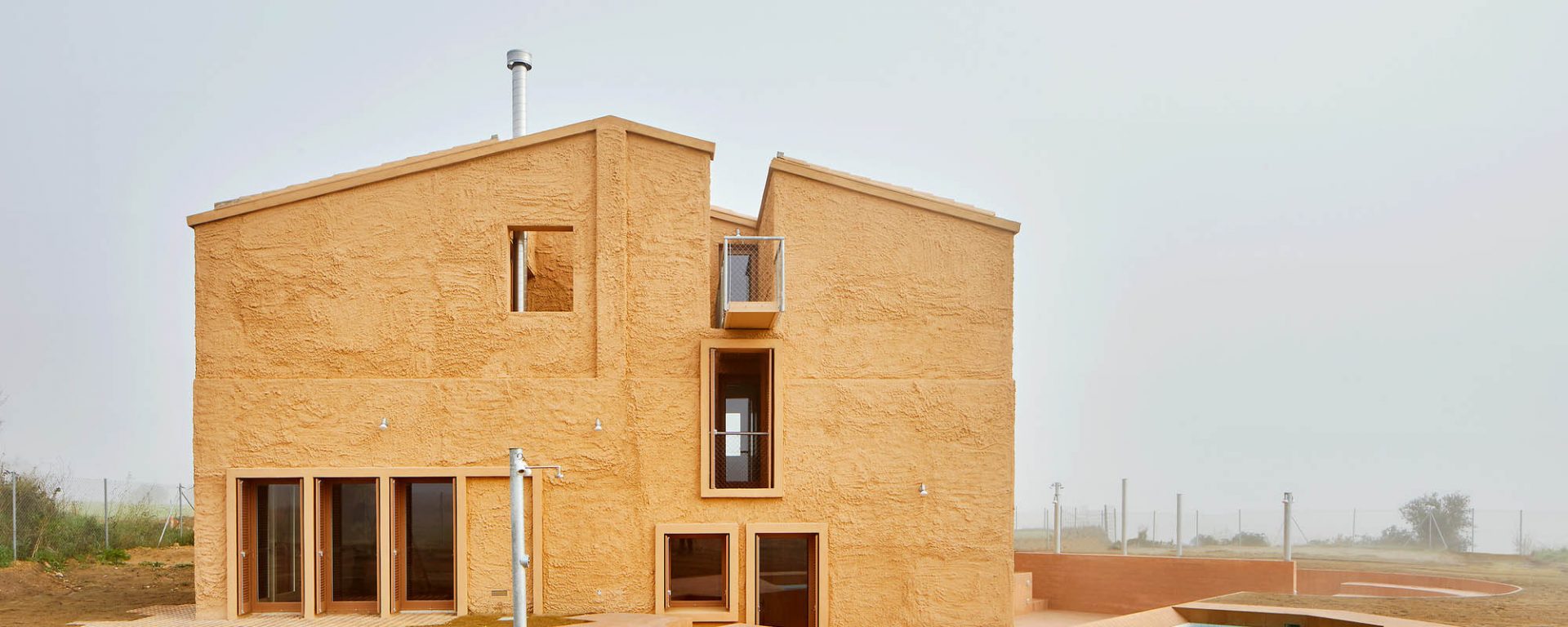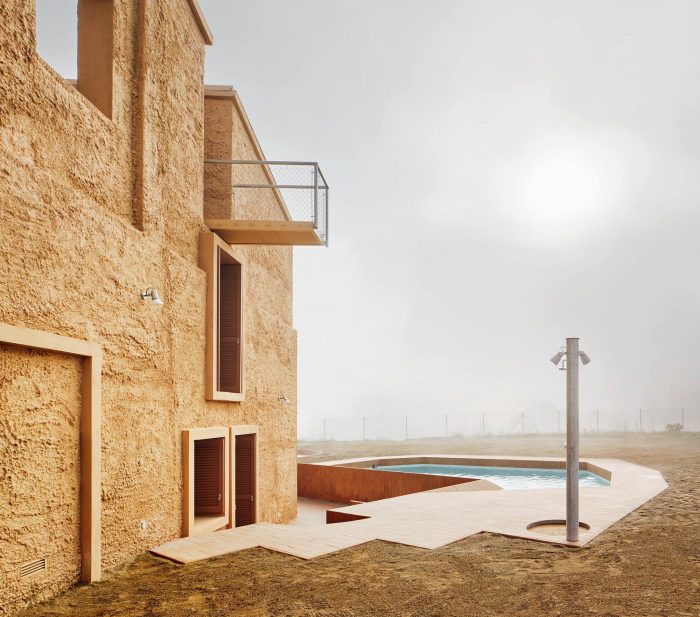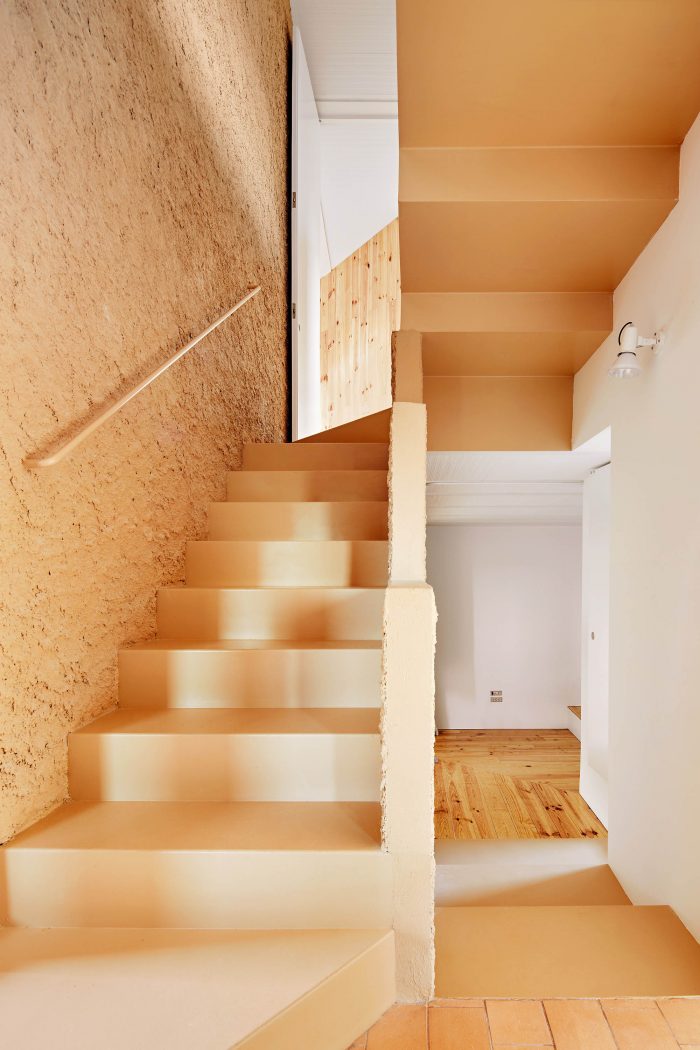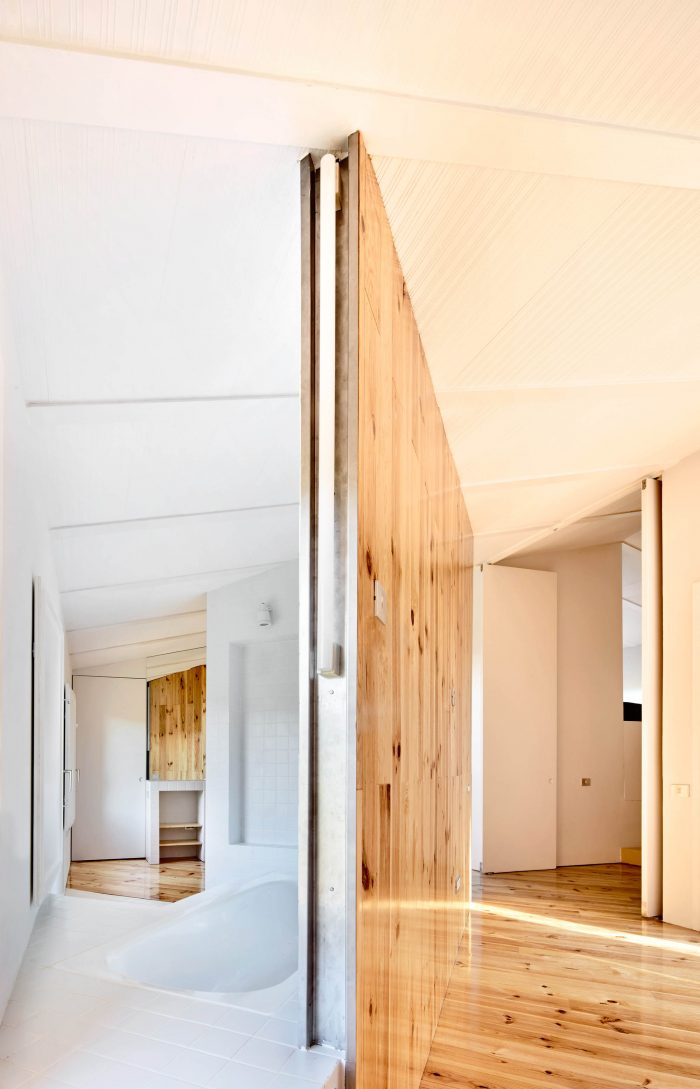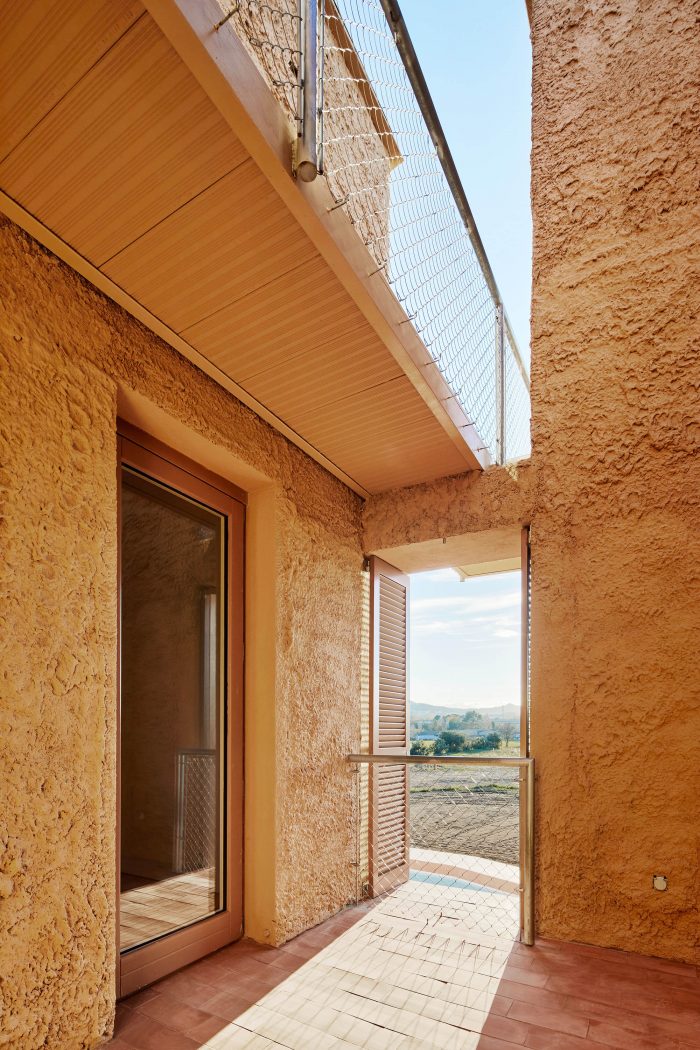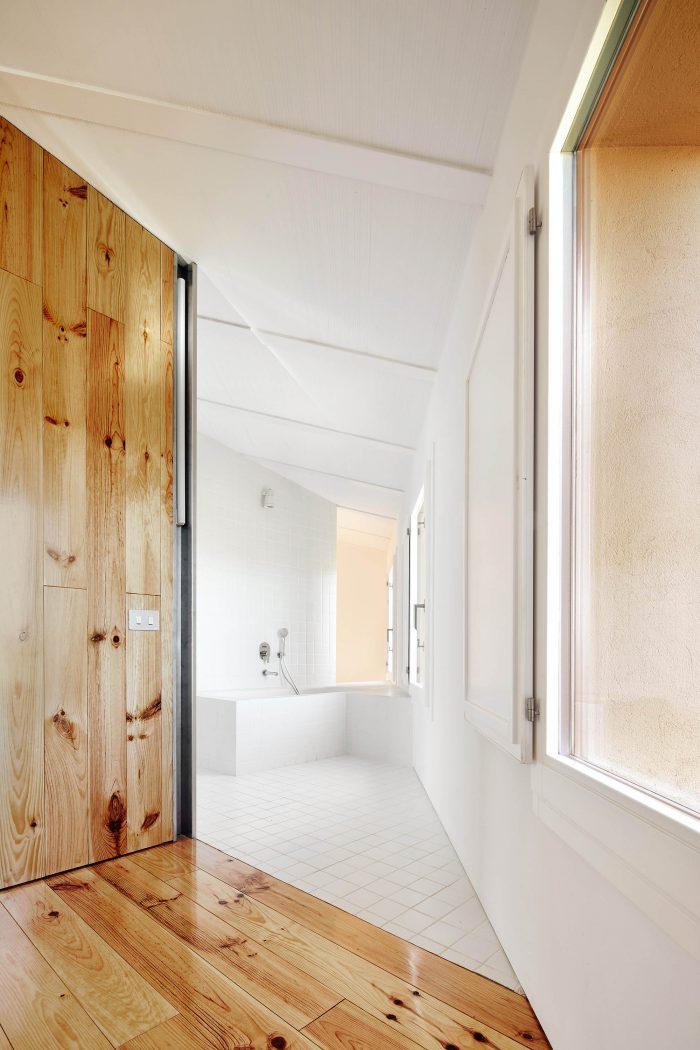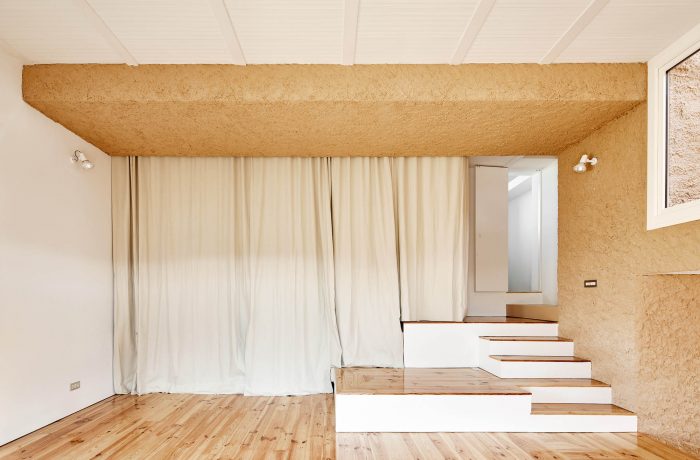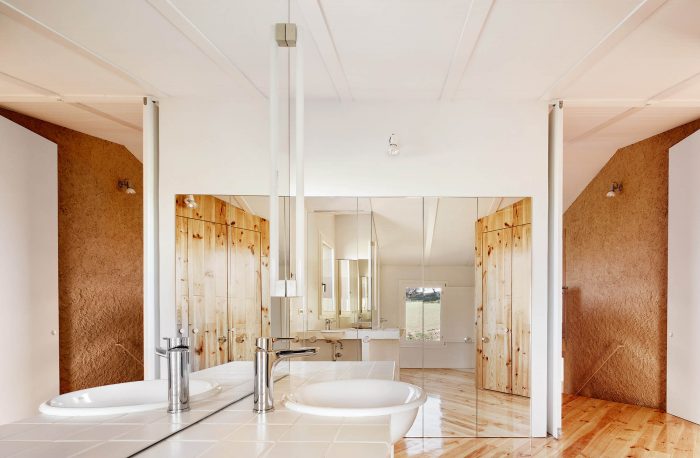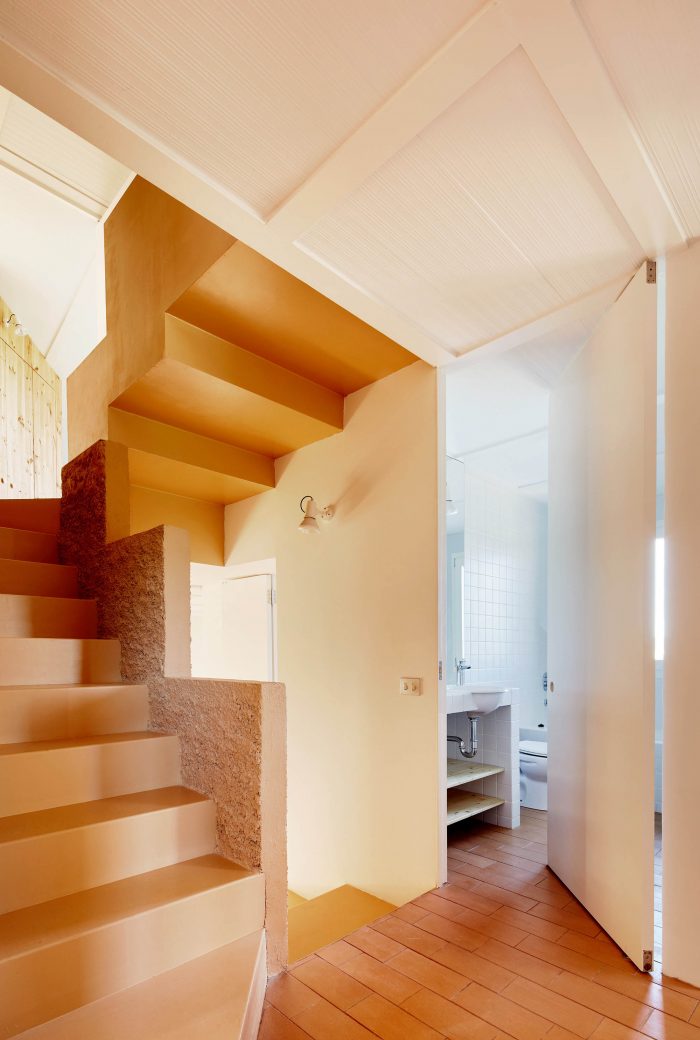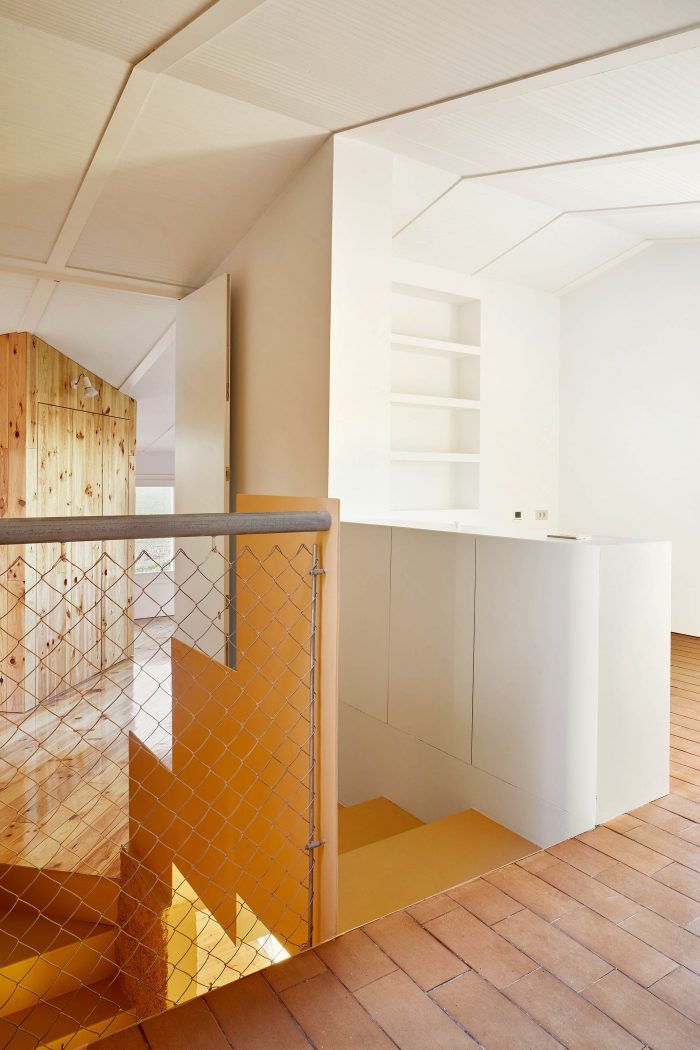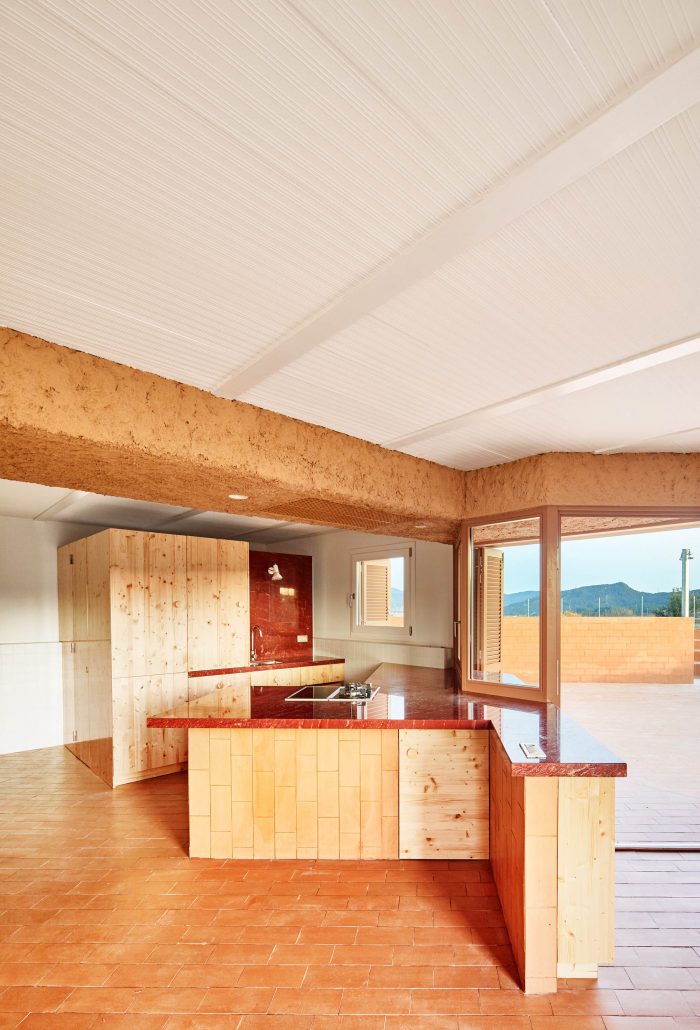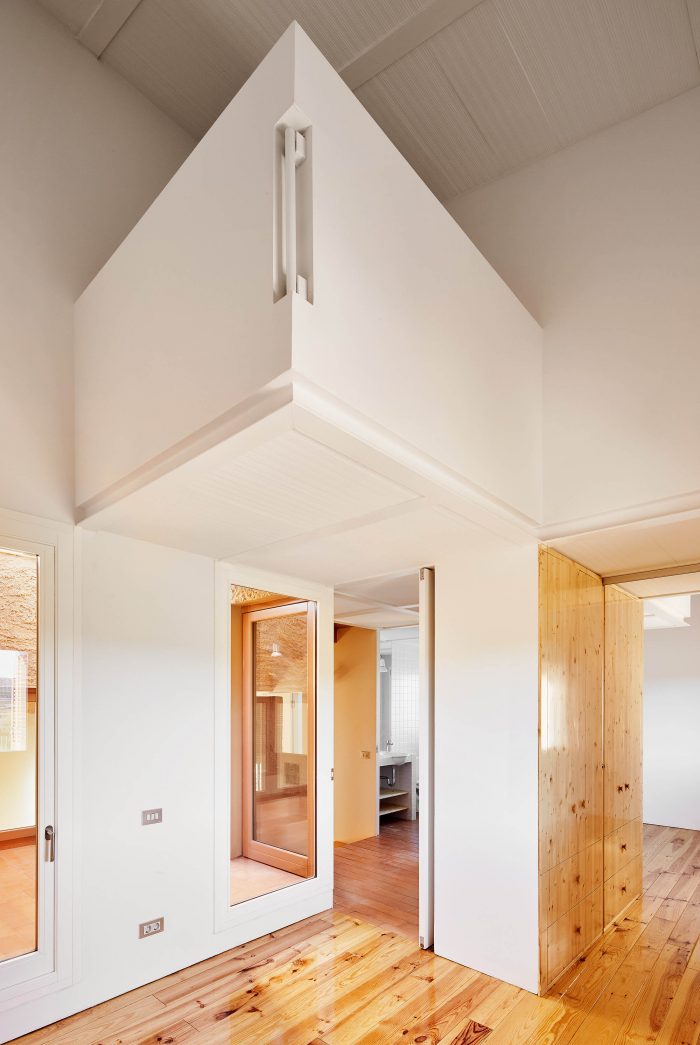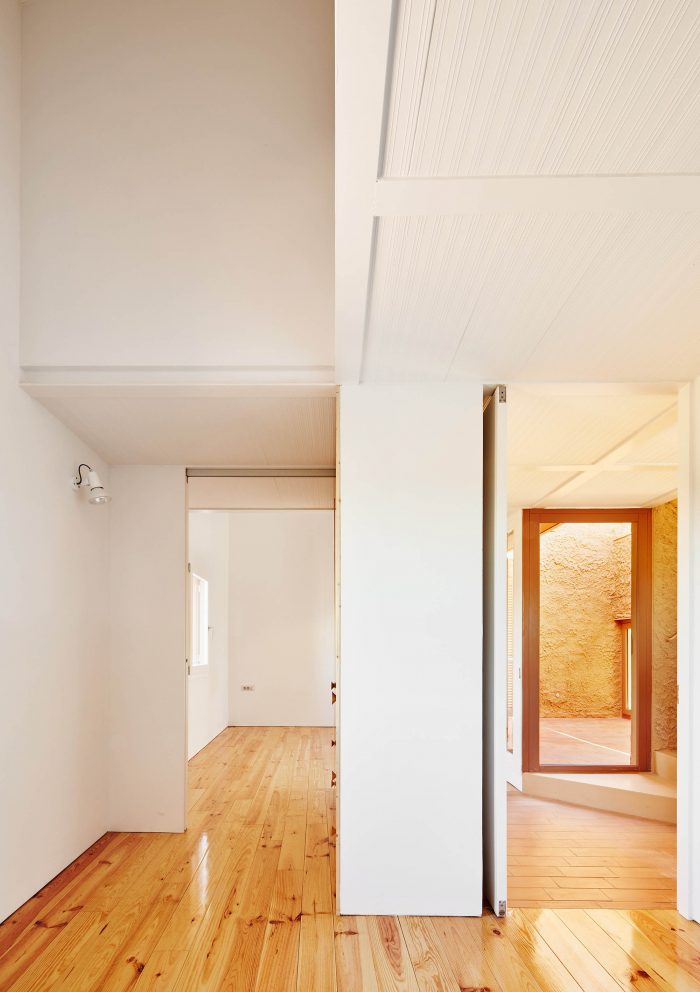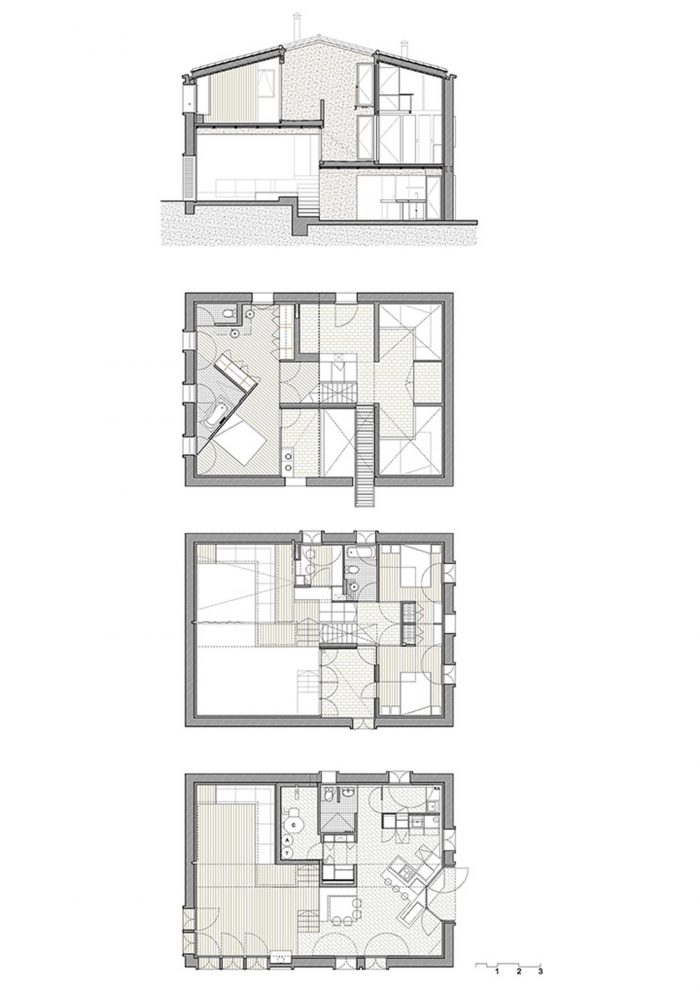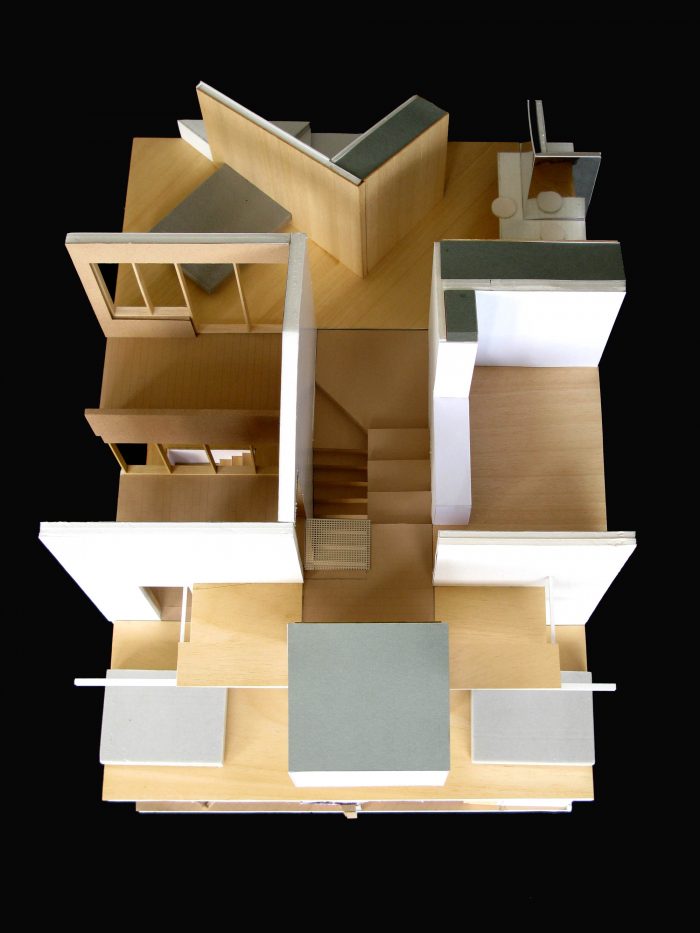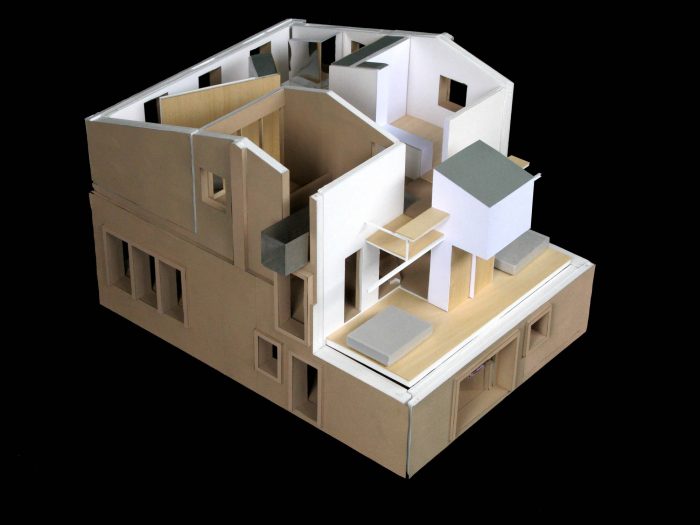我们介入的土地是位于Santa Margarida de Montbui郊区的一块平坦而修长的土地,面积为7.000平方米。该地块最初有一栋农业用途的建筑,处于废墟状态,我们被要求将其改造成一户家庭的住房。根据建筑法规,尽管先前的建筑只是一个带有纤维水泥屋顶的小屋,但仍被视为农舍,不允许在体积和立面开口方面有任何修改。
The land where we intervene is a flat and elongated plot of 7.000m2 in the outskirts of Santa Margarida de Montbui. The plot initially had a building for agricultural use in a state of ruin that we were asked to transform into a single-family housing. The building regulations, according to which the pre-existing construction was considered as a farmhouse despite of being just a hut with fibrocement rooftop, didn´t allow any modification in terms of volumetrics and façade openings.
体积与环境有直接的关系,在从田野到室内的过渡中没有前奏。功能方案的改变要求将房屋的直接环境定义为一个相对于完全开放的平原来说更加有限和受保护的区域。这就是为什么它被挖掘了1米,直到达到露台的高度,露台提供了进入房子的主要通道,并促进了与城市化的其他部分的交流。通过这种方式,该提案定义了一个新的人工景观,它被认为是外部和内部之间互动的主要平台。
The volume had a direct relationship with the environment, without preamble in the transition from the field to the interior. The change of the functional program required to define the immediate environment of the house as a more limited and protected area in relation to the totally open plain. This is the reason why it was excavated 1m until reaching the height of the terrace which gives the main access to the house and facilitates the communication with the rest of the urbanization . In this way, the proposal defines a new artificial landscape, that is conceived as the main platform of interaction between the exterior and the interior.
该功能方案由交错的平台开发,这些平台围绕一个中央承重核心排列。这个核心作为一个大的支柱,包含所有类型的设施和楼梯,并将生活空间相互连接。这个支柱的中心地位允许钢板克服较小的跨度,因此它们可以有较小的厚度,强调了支撑物的庞大和被支撑物的轻盈之间的对比。
The functional program is developed by staggered platforms that are arranged around a central load-bearing core. This core, which performs as a large pillar, contains all kind of facilities and staircases, and interconnects the living spaces. The centrality of this pillar allows that the steel slabs overcome smaller spans and therefore they could have a smaller thickness, emphasizing the contrast between the massiveness of what supports and the lightness of what is supported.
房子的材料性增强了这种对比和对立的想法,所以主要的承重元素是粗糙的、沉重的和粗放的,而次要的元素和内部隔断有更光滑和更轻的表面处理,并且是用轻结构技术建造。干预措施有一个大地色系的调色板,倾向于与环境相联系。
The materiality of the house enhances this idea about contrasts and contrapostions, so that the main load-bearing elements are rough, heavy and coarse, while the secondary elements and the interior partitions have smoother and lighter finishings and are built with light structure techniques. The intervention has a chromatic palette of earthy tones that tends to relate to the environment.
房子的高度是由一系列不同高度的夹层组成的,从公共区域上升到卧室,最后在一个阳台上结束,可以看到谷物田。
The house is developed in its height as a succession of mezzanines of varying height that rises up from the common areas to the bedrooms and concludes on a balcony that strikes out to the cereal fields.
Architects: ARQUITECTURA-G
Area: 200 m²
Year: 2016
Photographs: José Hevia
Manufacturers: Cerámicas Calaf, Indoors
Structural Consultant:Toni Casas
Rigger:Vinclament (Xavier Badía)
Architects In Charge:Jonathan Arnabat, Jordi Ayala-Bril, Aitor Fuentes, Igor Urdampilleta
City:Barcelona
Country:Spain

